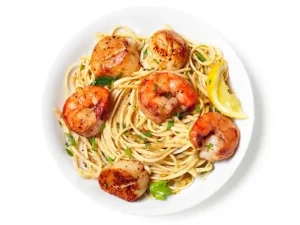Delicious and Nutritious french vegetarian recipes
french vegetarian recipes rich tapestry of French cuisine, where meats and dairy often take center stage, vegetarian dishes are quietly emerging as star players.
French vegetarian recipes celebrate the abundance of fresh produce, herbs, and plant-based proteins, delivering meals that are both satisfying and exquisitely flavorful.
For those seeking a journey into the heart of French cooking without meat, we’ve compiled an extensive guide to some of the finest vegetarian dishes that embody the essence of France.
Traditional Ratatouille: A Symphony of Seasonal Vegetables
Ratatouille is the quintessential French vegetarian dish, hailing from the sun-kissed region of Provence. This vegetable medley bursts with flavor, combining zucchini, eggplant, bell peppers, onions, and tomatoes, all simmered to perfection in a blend of olive oil and herbs.
A Brief History of Ratatouille
Ratatouille originates from the Provence region of France, a sun-drenched area known for its abundance of fresh produce and fragrant herbs.
The word “ratatouille” comes from the French verb “touiller,” french vegetarian recipes which means to stir or toss.
This reflects the dish’s method of preparation, where vegetables are carefully combined to create a symphony of flavors.
Historically, ratatouille was considered a peasant dish—a way to use up the summer’s glut of vegetables. Over time, however, it has evolved into a celebrated dish that graces tables in both humble homes and fine dining establishments.
Its rise in popularity can be attributed to its versatility, nutritional value, and the sheer joy of eating a dish that captures the essence of summer.
The Art of Choosing the Right Vegetables french vegetarian recipes

At the heart of a perfect ratatouille lies the quality of its ingredients. Traditional ratatouille is made from a few core vegetables: eggplant, zucchini, bell peppers, onions, and tomatoes. Each vegetable contributes its unique texture, flavor, and color, creating a dish that is as visually appealing as it is delicious.
- Eggplant: Choose firm, glossy eggplants with smooth skin. They should feel heavy for their size and have a slightly spongy texture when squeezed.
- Zucchini: Opt for small to medium-sized zucchini, which are tender and less likely to be bitter. Look for ones that are firm and free of blemishes.
- Bell Peppers: Red, yellow, and green bell peppers each bring a different level of sweetness and crunch. Select peppers that are bright, with smooth, unblemished skin.
- Onions: Sweet or yellow onions work best, adding a mild sweetness to the dish. Ensure they are firm and dry, without any soft spots or sprouting.
- Tomatoes: Use ripe, juicy tomatoes, preferably from a vine-ripened variety. They should be fragrant and slightly soft to the touch.
The Importance of Layering Flavors
A key element in creating an exceptional ratatouille is the careful layering of flavors.
This process allows each vegetable to maintain its integrity while contributing to the overall depth of the dish.
There are two main methods to achieve this: the traditional Provençal method and the modern confit-byaldi technique.
Provençal Method
In the traditional Provençal method, each vegetable is sautéed separately to enhance its flavor and texture.
This method requires patience, as the vegetables are cooked one by one, starting with the eggplant, followed by the zucchini, peppers, onions, and finally the tomatoes.
french vegetarian recipes After sautéing, the vegetables are combined and gently simmered with garlic and herbs de Provence, a blend of thyme, rosemary, oregano, and marjoram.
Confit-Byaldi Technique
Popularized by the animated film Ratatouille, the confit-byaldi technique involves slicing the vegetables thinly and arranging them in a circular pattern.
The vegetables are then baked slowly in the oven, allowing the flavors to meld together over time.
This method not only produces a visually stunning dish but also intensifies the flavors, resulting in a ratatouille that is both rich and complex.
The Role of Fresh Herbs and Aromatics

Herbs and aromatics are indispensable in a traditional ratatouille, imparting the distinctive flavors of the Mediterranean. Garlic, thyme, basil, and parsley are commonly used to enhance the natural sweetness of the vegetables.
- Garlic: Adds a pungent, savory depth to the dish. It can be minced and sautéed with the vegetables or added whole for a milder flavor.
- Thyme: A quintessential Provençal herb, thyme provides earthy, floral notes that complement the richness of the vegetables.
- Basil: Fresh basil brings a sweet, peppery flavor that brightens the dish. Add it just before serving to preserve its delicate aroma.
- Parsley: This herb adds a fresh, slightly bitter note, balancing the sweetness of the tomatoes and peppers.
In addition to these herbs, a splash of good-quality olive oil is essential. It not only prevents the vegetables from sticking but also infuses the ratatouille with the fruity, peppery notes characteristic of Mediterranean cuisine.
Cooking Techniques: Sauté, Simmer, and Bake
Cooking ratatouille requires a combination of techniques to achieve the desired texture and flavor. Each step plays a crucial role in the final dish.
Sautéing
Sautéing the vegetables separately ensures that they retain their individual flavors and textures. Start with the eggplant, which absorbs oil quickly, followed by the zucchini, peppers, and onions. Use a large, heavy-bottomed pan and work in batches if necessary to avoid overcrowding the pan, which can cause the vegetables to steam rather than brown.
Simmering
After the vegetables have beenjalbiteworldfood, they are combined in a pot and gently simmered. This allows the flavors to meld together while maintaining the integrity french vegetarian recipes of each vegetable.
The addition of tomatoes at this stage creates a sauce that binds the dish together. Simmer the ratatouille over low heat, stirring occasionally, until the vegetables are tender and the sauce has thickened.
Baking
For those using the confit-byaldi technique, the final step is baking the ratatouille in the oven. Arrange the vegetables in a circular pattern in a baking dish, drizzle with olive oil, and cover with parchment paper.
french vegetarian recipes Bake at a low temperature for several hours, allowing the vegetables to cook slowly and the flavors to intensify. The result is a dish that is both visually striking and deeply flavorful.
Serving Suggestions: From Casual to Elegant

Ratatouille is an incredibly versatile dish that can be served in a variety of ways, from a casual family dinner to an elegant dinner party.
As a Main Course
Serve ratatouille as a main course with a crusty baguette or a side of rice. For a heartier meal, pair it with a poached egg, roasted chicken, or grilled fish.
As a Side Dish
Ratatouille makes an excellent side dish for grilled meats, particularly lamb or pork. The vibrant flavors and textures of the vegetables provide a refreshing contrast to the richness of the meat.
As an Appetizer
For a sophisticated appetizer, serve ratatouille on crostini or as a topping for bruschetta. Garnish with fresh basil or a sprinkle of goat cheese for added flavor and elegance.
Variations: A World of Possibilities
While the traditional ratatouille recipe is a masterpiece in itself, there are countless variations that can be explored to suit different tastes and dietary preferences.
Ratatouille Niçoise
This version hails from the city of Nice and includes potatoes and artichokes in addition to the standard vegetables. The potatoes add heartiness to the dish, making it a more substantial meal.
Winter Ratatouille
For a winter twist, substitute the summer vegetables with root vegetables like carrots, parsnips, and butternut squash. This variation is warming and comforting, perfect for the colder months.
Spicy Ratatouille
Add a kick to your ratatouille by incorporating chili peppers or cayenne pepper. This variation adds heat to the dish, balancing the sweetness of the vegetables with a spicy edge.
Vegan Ratatouille
Ratatouille is naturally vegan, but you can enhance its appeal by serving it over quinoa or couscous, or by adding a sprinkle of nutritional yeast for a cheesy flavor.
french vegetarian recipes Celebration of Simplicity and Flavor

Traditional ratatouille is more than just a vegetable stew; it is a celebration of simplicity, flavor, and the bounty of the garden. By choosing the freshest ingredients, carefully layering the flavors, and using the right techniques, you can create a dish that is both rustic and refined.
french vegetarian recipes Whether served as a main course, a side dish, or an appetizer, ratatouille is sure to delight the senses and bring a taste of Provence to your table.
Delicious and Nutritious french vegetarian recipes












Post Comment